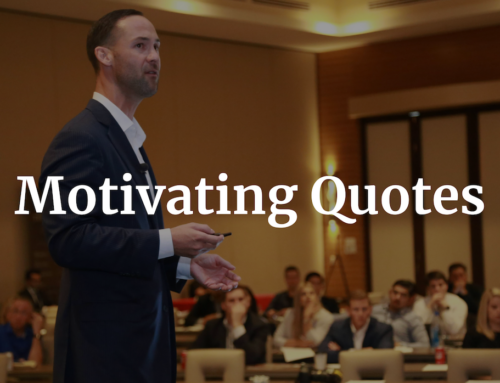Table of contents
- 1. Driving Success with Revenue Growth Metrics
- 2. Optimizing Sales Pipelines for Success
- 3. Empowering Sales Teams for Excellence
- 4. Strategic Insights with Customer Acquisition Metrics
- 5. Unlocking Growth through Lead Generation
- 6. Efficiency in Motion: Sales Cycle Metrics Demystified
- 7. Securing Success with Customer Retention
- 8. Productivity Unveiled: Activity Metrics for Sales Excellence
- 9. Navigating the Future: The Role of Forecast Accuracy
- 10. Innovate and Excel: The Role of Sales Technology Adoption
The Vice Presidents of Sales plays the most important role in steering organizations toward revenue success. Tracking and understanding key performance indicators (KPIs) is paramount for informed decision-making and sustainable growth. In this blog, we delve into the essential KPIs that every VP of Sales should meticulously monitor to navigate the path to success.
1. Driving Success with Revenue Growth Metrics
Explore the significance of tracking overall revenue growth and breaking it down by segments or regions. Understand how revenue metrics serve as a compass for sales strategy effectiveness. These metrics serve as the compass, offering strategic insights and empowering VPs to make informed decisions that impact the overall health of the sales organization.
Revenue Metrics:
- Revenue Growth: At the core of revenue metrics lies the fundamental indicator – overall revenue growth. A VP of Sales should have a comprehensive understanding of how the organization is performing in terms of generating revenue. This metric not only gauges success but also serves as a baseline for evaluating the effectiveness of sales strategies and initiatives.
- Revenue by Segment/Region: Breaking down revenue by segments or regions adds granularity to the analysis. A savvy VP recognizes the importance of understanding which areas are thriving and which may require additional attention. This breakdown provides actionable insights, guiding the allocation of resources and fine-tuning strategies to maximize revenue in specific segments or regions.
- Forecast Accuracy: In the pursuit of revenue excellence, accurate forecasting is paramount. A VP of Sales should closely monitor the alignment between forecasted revenue and actual performance. This metric not only enhances strategic planning but also helps in adapting to market dynamics and seizing emerging opportunities with agility.
- Customer Acquisition Cost (CAC) and Customer Lifetime Value (CLV): Understanding the financial aspects of customer acquisition and retention is essential. Calculating CAC reveals how much it costs to acquire a new customer, ensuring that acquisition expenses align with the revenue generated. Simultaneously, CLV provides insights into the long-term value of a customer, guiding decisions on customer retention strategies and maximizing the lifetime value of each customer relationship.
- Revenue by Product/Service: For organizations offering multiple products or services, dissecting revenue by product/service provides valuable insights into the performance of each offering. A VP of Sales should be adept at identifying high-performing products/services and those that may require adjustments or targeted marketing efforts.
By regularly monitoring and interpreting these strategic indicators, the VP can not only gauge the present health of the sales organization but also forecast and adapt to the future with confidence. As revenue metrics serve as the compass, the VP becomes the navigator, steering the organization toward consistent and sustainable growth.
2. Optimizing Sales Pipelines for Success
Uncover the insights provided by monitoring pipeline value and conversion rates. Learn how effective pipeline management can identify bottlenecks and enhance the overall sales process.
Pipeline Metrics:
- Pipeline Value: At the heart of pipeline optimization lies the total value of deals within it. A VP of Sales should meticulously monitor the pipeline’s financial health, ensuring that it aligns with revenue targets. Understanding the distribution of deal values across different stages provides insights into potential revenue streams and aids in allocating resources strategically.
- Pipeline Conversion Rates: To identify and address bottlenecks in the sales process, a VP of Sales must delve into the conversion rates at each stage of the pipeline. Analyzing how leads progress from initial contact to closed deals sheds light on areas that may need attention or refinement. This granular understanding fosters a culture of continuous improvement, enhancing the overall efficiency of the sales pipeline.
- Sales Velocity: Sales velocity is the key to assessing how quickly deals move through the pipeline. A VP of Sales should track the average time it takes for a lead to progress from the initial stage to closure. Understanding sales velocity enables proactive decision-making, allowing the sales team to capitalize on opportunities swiftly and maintain a dynamic and responsive approach.
- Deal Size and Win Rates: Optimizing the sales pipeline requires a nuanced approach to deal sizes and win rates. A VP of Sales should analyze the correlation between the size of deals and the win rates at different stages. This insight enables strategic decision-making, guiding the team on where to focus efforts for maximum impact and which deal sizes offer the most lucrative returns.
- Funnel Leakage: Addressing funnel leakage is pivotal for pipeline optimization. A VP of Sales must identify stages where leads are dropping off or stagnating. This meticulous analysis allows for targeted interventions, ensuring a higher percentage of leads progress seamlessly through the entire sales funnel.
In the realm of sales leadership, optimizing the sales pipeline is an ongoing journey rather than a destination. Armed with a comprehensive understanding of pipeline value, conversion rates, sales velocity, deal sizes, win rates, and funnel leakage, a VP of Sales can navigate the intricacies of the sales pipeline with finesse. This proactive approach not only ensures a healthy pipeline but positions the sales organization for sustained success in a dynamic and competitive market. As the VP becomes the architect of the sales pipeline, the organization gains a strategic advantage, driving revenue growth with precision and efficiency.
3. Empowering Sales Teams for Excellence
Delve into the importance of tracking quota attainment and sales productivity. Understand how these metrics reflect the efficiency and effectiveness of the sales team.
Sales Team Performance:
- Quota Attainment: One of the fundamental measures of sales team empowerment is the achievement of quotas. A VP of Sales must set realistic yet challenging quotas, motivating the team to strive for excellence. Regularly tracking quota attainment provides insights into individual and collective performance, allowing for targeted coaching and support where needed.
- Sales Productivity: Empowering a sales team goes hand in hand with ensuring high levels of productivity. A VP of Sales should focus on metrics such as calls per day, meetings booked, and deals closed. By setting clear expectations and providing the necessary tools and training, a VP can enhance sales productivity, enabling the team to achieve more in less time.
- Training and Development: Investing in continuous training and development is a cornerstone of sales team empowerment. A VP of Sales should facilitate ongoing learning opportunities, covering product knowledge, sales techniques, and industry trends. This commitment to professional growth not only enhances individual capabilities but also contributes to a more dynamic and adaptable sales force.
- Recognition and Rewards: Recognizing and rewarding achievements is a powerful motivator for sales teams. A VP of Sales should implement a robust recognition program that celebrates both individual and team successes. This not only boosts morale but also fosters a positive and competitive spirit within the team, driving them to consistently exceed expectations.
- Clear Communication: Effective communication is the linchpin of team empowerment. A VP of Sales should ensure that communication channels are open, transparent, and supportive. Providing regular feedback, acknowledging accomplishments, and addressing concerns promptly creates a culture of trust and collaboration, empowering the team to overcome challenges and seize opportunities.
- Career Development Opportunities: Empowered sales teams are those with clear paths for career development. A VP of Sales should work to identify and nurture talent within the team, offering growth opportunities and career advancement. This not only boosts individual motivation but also contributes to the long-term success and stability of the sales organization.
For a VP of Sales, true success lies in the empowerment of the sales team. By focusing on quota attainment, sales productivity, training and development, recognition and rewards, clear communication, and career development opportunities, a VP can create a high-performing and motivated sales force. As the architect of empowerment, the VP sets the tone for a culture of excellence, where each team member is inspired to reach new heights. In this environment, sales teams don’t just meet targets; they exceed them consistently, driving the organization toward sustained growth and success.
4. Strategic Insights with Customer Acquisition Metrics
Explore the dynamics of calculating Customer Acquisition Cost (CAC) and understanding Customer Lifetime Value (CLV). Learn how these metrics guide decisions on customer acquisition and retention. Beyond the numbers, these metrics offer a window into the effectiveness of sales strategies, guiding the VP in making informed decisions for sustained growth.
Customer Acquisition Metrics:
- Customer Acquisition Cost (CAC): Understanding the cost of acquiring a new customer is foundational to strategic decision-making. A VP of Sales should meticulously track Customer Acquisition Cost (CAC) to gauge the efficiency of marketing and sales efforts. By comparing CAC to customer lifetime value, the VP can ensure that acquisition expenses align with the long-term value of acquired customers, optimizing resource allocation.
- Customer Lifetime Value (CLV): Customer Lifetime Value (CLV) provides a holistic view of the total revenue a customer is expected to generate throughout their relationship with the company. A VP of Sales should use CLV to differentiate between high-value and low-value customers, tailoring acquisition strategies accordingly. This metric is pivotal in shaping long-term customer retention and growth strategies.
- CAC Payback Period: The CAC Payback Period indicates the time it takes for the company to recover the investment made in acquiring a new customer. A VP of Sales should analyze this metric to assess the financial efficiency of customer acquisition strategies. A shorter payback period signifies quicker returns on investment, allowing for more agile and responsive decision-making.
- Marketing-Sales Alignment: Strategic insights emerge when customer acquisition metrics foster collaboration between marketing and sales teams. A VP of Sales should ensure alignment between these teams, leveraging metrics to identify the most effective channels and campaigns. This collaborative approach optimizes lead generation efforts and enhances the overall efficiency of the customer acquisition process.
- Lead-to-Customer Conversion Rates: Analyzing the conversion rates from leads to customers provides valuable insights into the effectiveness of the sales funnel. A VP of Sales should track and optimize these rates, identifying potential bottlenecks and refining the sales process for maximum impact. This metric guides strategic decisions on lead generation and engagement strategies.
For a VP of Sales, customer acquisition metrics are not just data points; they are strategic tools for informed decision-making. By delving into CAC, CLV, CAC Payback Period, marketing-sales alignment, and lead-to-customer conversion rates, a VP can unlock insights that shape the trajectory of the sales organization. Armed with these strategic metrics, the VP navigates the complexities of customer acquisition with precision, ensuring a dynamic and responsive approach to the evolving market landscape.
5. Unlocking Growth through Lead Generation
Investigate the role of lead conversion rates and lead velocity rate in shaping successful lead generation strategies. Understand how these metrics contribute to sustained sales momentum. The ability to identify, nurture, and convert leads into loyal customers is central to the success of any sales organization.
Lead Generation Metrics:
- Targeted Audience Segmentation: A strategic approach to lead generation begins with a deep understanding of the target audience. A VP of Sales should work collaboratively with marketing teams to segment the audience based on demographics, behaviors, and preferences. This segmentation enables the creation of targeted and personalized campaigns, maximizing the impact of lead generation efforts.
- Content Marketing Excellence: Content is the currency of modern lead generation. A VP of Sales should champion content marketing excellence, ensuring that the organization produces valuable, relevant, and engaging content. This content serves as a magnet, attracting potential leads and establishing the organization as an authority in its industry. From blog posts to whitepapers, the content should resonate with the target audience and address their pain points.
- Multi-Channel Approach: Diversifying lead generation channels is essential for reaching a broader audience. A VP of Sales should oversee the implementation of a multi-channel approach, leveraging platforms such as social media, email marketing, webinars, and industry events. This strategic diversity not only expands the reach but also ensures that leads are sourced from various touchpoints, increasing the overall effectiveness of lead generation.
- Marketing-Sales Alignment: Effective lead generation is a collaborative effort between marketing and sales teams. A VP of Sales should foster strong alignment between these teams, ensuring a seamless handoff of leads from marketing to sales. Clear communication, shared goals, and joint strategies enhance the efficiency of the lead generation process, translating leads into revenue-generating opportunities.
- Data-Driven Decision-Making: Strategic lead generation thrives on data-driven decision-making. A VP of Sales should prioritize the collection and analysis of data related to lead performance, conversion rates, and customer behaviors. These insights enable the fine-tuning of lead generation strategies, optimizing the allocation of resources to channels that yield the highest returns.
By embracing targeted audience segmentation, content marketing excellence, a multi-channel approach, marketing-sales alignment, and data-driven decision-making, the VP can navigate the complexities of lead generation with precision. The VP’s role as the architect of these strategies propels the organization forward, ensuring a steady influx of high-quality leads and positioning the sales team for success in a competitive market landscape.
6. Efficiency in Motion: Sales Cycle Metrics Demystified
Unravel the insights offered by average sales cycle length and time to first sale. Discover how these metrics shed light on the efficiency of the sales process. Understanding and demystifying key sales cycle metrics is essential for making informed decisions that drive revenue growth.
Sales Cycle Metrics:
- Average Sales Cycle Length: Determine the average time it takes for a lead to progress through the entire sales cycle.
- Time to First Sale: Track the time it takes for a new sales representative to close their first deal, indicating onboarding effectiveness.
- Sales Cycle Length: The duration it takes for a lead to progress from initial contact to closed deal is a critical metric known as the sales cycle length. A VP of Sales should demystify this metric by analyzing the average time it takes to move prospects through each stage. Shortening the sales cycle accelerates revenue generation, and the VP can strategically allocate resources to address bottlenecks and streamline the process.
- Conversion Rates at Each Stage: Understanding conversion rates at each stage of the sales cycle provides invaluable insights into the effectiveness of the sales process. A VP of Sales should delve into the data to demystify where leads may be stalling or dropping off. This granular understanding enables targeted interventions, optimizing the conversion rates and ensuring a smoother flow through the sales pipeline.
- Win Rates: Win rates shed light on the percentage of opportunities that result in closed deals. Demystifying win rates allows the VP of Sales to identify the most effective strategies and tactics employed by the sales team. By understanding the factors contributing to successful closures, the VP can reinforce these winning approaches and replicate them across the sales organization.
- Average Deal Size: The average deal size is a metric that demystifies the monetary value of closed deals. A VP of Sales should analyze this metric to identify patterns and trends related to deal size. Understanding the factors influencing deal size allows for strategic decision-making, such as targeting specific customer segments or industries that contribute to larger deals.
- Pipeline Velocity: Pipeline velocity is the speed at which opportunities move through the sales pipeline. Demystifying pipeline velocity enables the VP of Sales to identify areas for improvement, whether it’s shortening the time spent in each stage or addressing delays in the sales process. This metric is instrumental in maintaining a dynamic and responsive sales engine.
For a VP of Sales, the efficiency of the sales cycle is paramount in achieving revenue targets. By demystifying key metrics such as sales cycle length, conversion rates, win rates, average deal size, and pipeline velocity, the VP can navigate the intricacies of the sales process with precision.
7. Securing Success with Customer Retention
The role of a Vice President of Sales (VP) can sometimes extend beyond acquiring new customers to ensuring their ongoing success and satisfaction. Measuring customer success is a strategic imperative for the VP, providing insights into the effectiveness of sales strategies and the overall health of customer relationships.
Customer Retention Metrics:
- Customer Satisfaction (CSAT) and Net Promoter Score (NPS): Two fundamental metrics for measuring customer success are Customer Satisfaction (CSAT) and Net Promoter Score (NPS). CSAT gauges customer satisfaction levels through direct feedback, while NPS assesses the likelihood of customers recommending the company to others. The VP of Sales should regularly monitor these scores, using them as benchmarks to understand overall customer sentiment and identify areas for improvement.
- Renewal Rates and Churn: Renewal rates and churn are critical indicators of customer success and retention. The VP of Sales should track the percentage of customers renewing their subscriptions or contracts and actively work to minimize churn. Analyzing the reasons behind churn provides valuable insights into potential pain points and areas for enhancement in products or services.
- Expansion Revenue and Upsell Opportunities: Successful customer relationships often lead to expansion revenue through upsell opportunities. The VP of Sales should measure the growth in revenue generated from existing customers, showcasing the ability to add value and meet evolving needs. Tracking upsell opportunities and conversion rates provides a clear picture of the organization’s effectiveness in maximizing customer value.
- Time-to-Value and Onboarding Success: The time it takes for customers to realize value from the product or service, known as time-to-value, is a crucial metric. The VP of Sales should focus on optimizing onboarding processes to accelerate time-to-value, ensuring that customers quickly derive benefits from their investment. Successful onboarding sets the foundation for long-term satisfaction.
- Customer Health and Engagement Metrics: Monitoring customer health and engagement involves tracking key metrics such as product usage, feature adoption, and interaction with support resources. The VP of Sales should utilize analytics tools to assess the health of customer accounts, intervening when signs of disengagement or potential issues arise. Proactive engagement ensures that customers feel supported and valued throughout their journey.
Measuring customer success is not just a metric-driven task but a strategic imperative for sustainable growth. By consistently evaluating customer satisfaction, renewal rates, expansion revenue, time-to-value, and health metrics, the VP gains valuable insights into the overall health of customer relationships. In this strategic approach, customer success becomes a dynamic and ongoing commitment, ensuring that the sales organization not only acquires customers but also nurtures and sustains their success over the long term. The VP’s leadership in measuring and enhancing customer success solidifies the organization’s position as a trusted partner, fostering loyalty and advocacy in a competitive business landscape.
8. Productivity Unveiled: Activity Metrics for Sales Excellence
Dive into the significance of tracking sales calls, meetings, and email response rates. Learn how activity metrics reflect the engagement level of the sales team with prospects.
Activity Metrics:
- Sales Calls and Meetings: Track the number of sales calls and meetings conducted by the sales team to assess their level of engagement with prospects.
- Email Response Rates: Monitor the effectiveness of email outreach by analyzing response rates and engagement.
- Prospecting and Outreach Metrics: Effective prospecting is the lifeblood of successful sales, and the VP of Sales should closely monitor prospecting metrics. This includes the number of outbound calls, emails, and social outreach efforts. By analyzing these metrics, the VP can gauge the team’s proactive engagement with potential customers and identify areas for improvement in outreach strategies.
- Sales Meetings and Presentations: Measuring the frequency and success of sales meetings and presentations provides valuable insights into the team’s ability to advance opportunities through the sales pipeline. The VP should track metrics such as the number of scheduled meetings, attendance rates, and conversion rates from presentations to closed deals. These metrics reflect the effectiveness of the sales team in conveying value and closing deals.
- Activity-to-Opportunity Conversion Rates: The conversion of activities into meaningful opportunities is a critical metric for assessing the quality of the sales team’s interactions. The VP of Sales should calculate conversion rates from activities such as prospecting calls or demos to the creation of sales opportunities. A high conversion rate indicates that the team is engaging with prospects in a way that resonates and progresses the sales process.
- Pipeline Movement and Velocity: Pipeline movement and velocity metrics provide a holistic view of how efficiently opportunities progress through the sales pipeline. The VP should analyze the time it takes for leads to move from one stage to another, identifying potential bottlenecks and areas for acceleration. This real-time visibility enables proactive adjustments to optimize pipeline performance.
- Follow-up and Response Time: Timely and consistent follow-up is crucial in maintaining prospect engagement and accelerating the sales cycle. The VP of Sales should measure response times to inquiries and follow-up interactions. Rapid response times contribute to a positive customer experience and increase the likelihood of successful conversions.
By strategically analyzing prospecting efforts, sales meetings, activity-to-opportunity conversion rates, pipeline movement, and response times, the VP gains a comprehensive understanding of the team’s performance. In this data-driven approach, activity metrics serve as guideposts for continuous improvement, allowing the sales organization to refine strategies, optimize processes, and ultimately achieve sales excellence.
9. Navigating the Future: The Role of Forecast Accuracy
Understand the importance of comparing forecasted revenue with actuals to ensure accurate sales forecasting. Explore how forecast accuracy enhances strategic planning. The VP’s ability to accurately predict future sales performance not only influences strategic decision-making but also shapes the overall success and stability of the sales team.
Forecast Accuracy:
- Strategic Decision-Making: Forecast accuracy serves as the compass guiding strategic decision-making for the VP of Sales. Accurate predictions of future revenue enable the VP to align resources, set realistic targets, and make informed decisions about team structure and expansion. A precise forecast empowers the VP to navigate the ever-changing landscape of sales dynamics with confidence and agility.
- Resource Allocation and Optimization: Effectively allocating resources is a cornerstone of successful sales management. Forecast accuracy allows the VP to allocate sales reps, budget, and other resources optimally. By understanding the expected sales trajectory, the VP can strategically deploy resources to capitalize on emerging opportunities, address potential challenges, and ensure the sales engine runs at peak efficiency.
- Performance Evaluation and Accountability: Accurate forecasts serve as a benchmark for evaluating individual and team performance. The VP of Sales can compare actual results against forecasted numbers, providing insights into the effectiveness of sales strategies and the team’s ability to meet targets. This data-driven approach enhances accountability and enables the VP to identify areas for improvement or celebrate successes within the sales organization.
- Investor and Stakeholder Confidence: For a VP of Sales, maintaining the confidence of investors and stakeholders is paramount. Forecast accuracy plays a pivotal role in instilling trust among key stakeholders by demonstrating a clear understanding of the market, customer behavior, and sales trends. Reliable forecasts contribute to a positive perception of the sales organization’s strategic vision and execution capabilities.
- Adaptive Sales Strategies: In a rapidly evolving business landscape, the VP of Sales must lead the organization with adaptability. Accurate forecasts serve as early warning signals, allowing the VP to identify shifts in market conditions or customer preferences. Armed with this foresight, the VP can proactively adjust sales strategies, ensuring the organization remains agile and responsive to emerging opportunities or challenges.
By leveraging accurate forecasts, the VP can make informed decisions, optimize resource allocation, evaluate performance, foster stakeholder confidence, and adapt strategies in a dynamic marketplace.
10. Innovate and Excel: The Role of Sales Technology Adoption
Examine the impact of sales technology on performance and explore the importance of its effective adoption. Learn how leveraging technology enhances sales processes. The effective implementation of sales technology is a cornerstone for achieving operational excellence and staying competitive. For Vice Presidents of Sales (VPs), understanding and measuring the adoption of sales technology is crucial to ensure that the organization maximizes the benefits of its technological investments.
Sales Technology Adoption:
- Usage of Sales Tools: Evaluate the adoption and effectiveness of sales technologies, ensuring that the sales team leverages tools to streamline processes and improve performance.
- User Engagement and Utilization Rates: A fundamental metric for assessing sales technology adoption is user engagement and utilization rates. The VP should closely monitor how extensively the sales team engages with and utilizes the implemented technologies. High engagement rates indicate that the team is actively incorporating the tools into their daily workflows, leveraging the full potential of the technology stack.
- Training and Onboarding Completion: The successful adoption of sales technology often hinges on proper training and onboarding. The VP should measure the completion rates of training modules and onboarding sessions related to the implemented technologies. A high completion rate signifies that the sales team is equipped with the knowledge and skills needed to effectively leverage the capabilities of the technology.
- Data Quality and Accuracy: Sales technology relies heavily on data accuracy and completeness. The VP should assess the quality of data inputted into the system, examining factors such as completeness, accuracy, and timeliness. Consistent and accurate data not only reflects effective technology adoption but also enhances the reliability of insights derived from the system.
- Integration Across Systems: As organizations deploy a variety of sales technologies, seamless integration across systems becomes paramount. The VP should measure the extent to which different technologies integrate with one another. Smooth integration ensures a cohesive flow of information across the organization, reducing data silos and enhancing overall operational efficiency.
- Return on Investment (ROI): Ultimately, the VP of Sales needs to measure the tangible impact of sales technology on the organization’s performance. ROI metrics, such as increased sales productivity, accelerated sales cycles, and improved win rates, provide a comprehensive view of the technology’s effectiveness. By quantifying the outcomes against the initial investment, the VP can determine the overall success of the technology adoption strategy.
Measuring sales technology adoption is an ongoing process that requires a holistic approach, encompassing user engagement, training completion, data quality, integration, and ROI. For the VP of Sales, these metrics serve as guideposts to assess the effectiveness of the implemented technologies and make informed decisions for future investments.
Subscribe to our newsletter for regular updates on sales strategies, leadership insights, and industry trends. Let’s embark on a journey to elevate your sales organization together.
[CTA – Subscribe Now]This comprehensive blog provides valuable insights for VPs of Sales, offering actionable strategies and a roadmap to success in the ever-evolving sales landscape.
Reading Progress















